Welding is a technical task and boring in some cases. Especially for a beginner, it can be daunting and dangerous in some aspects. Fortunately mig welding is beginner friendly and can be easily learnt. Mig welding needs some tools and accessories for safety purposes. Also the accessories help to Mig weld metals properly.
Let’s have a discussion over some crucial accessories for mig welding.
Mig Welding Tools For Beginners
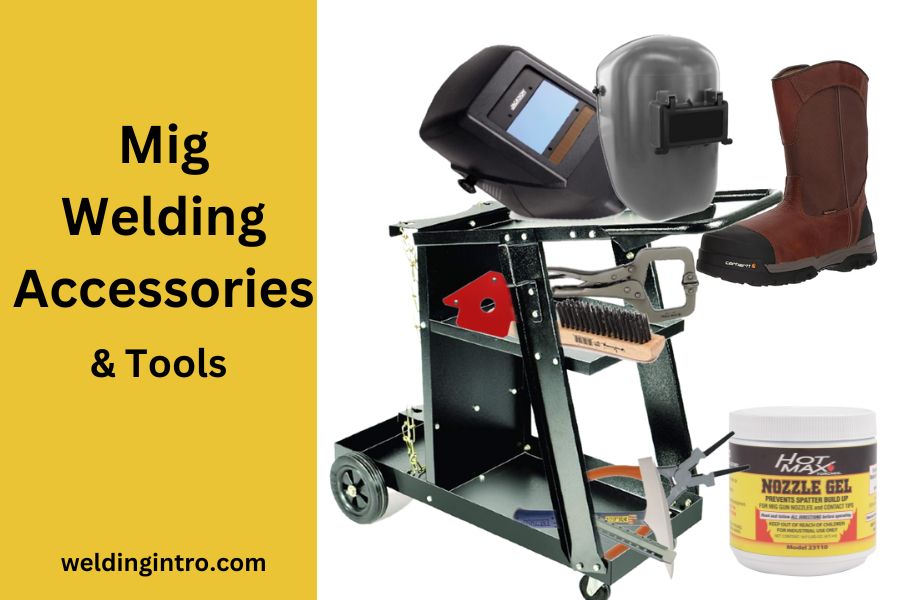
1. Mig Helmet or hood
For mig welding or any other type of welding, you must need a helmet or hood. There are various options to choose from when it comes to helmets. You may use Auto darkening helmet, pancake hood for mig or normal welding helmet.
a) Auto Darkening Helmet
Auto darkening helmet is the most popular type of helmet used in mig welding. The specialty of auto darkening helmets is, it protects the vision from harsh lights generated from the weld pool.
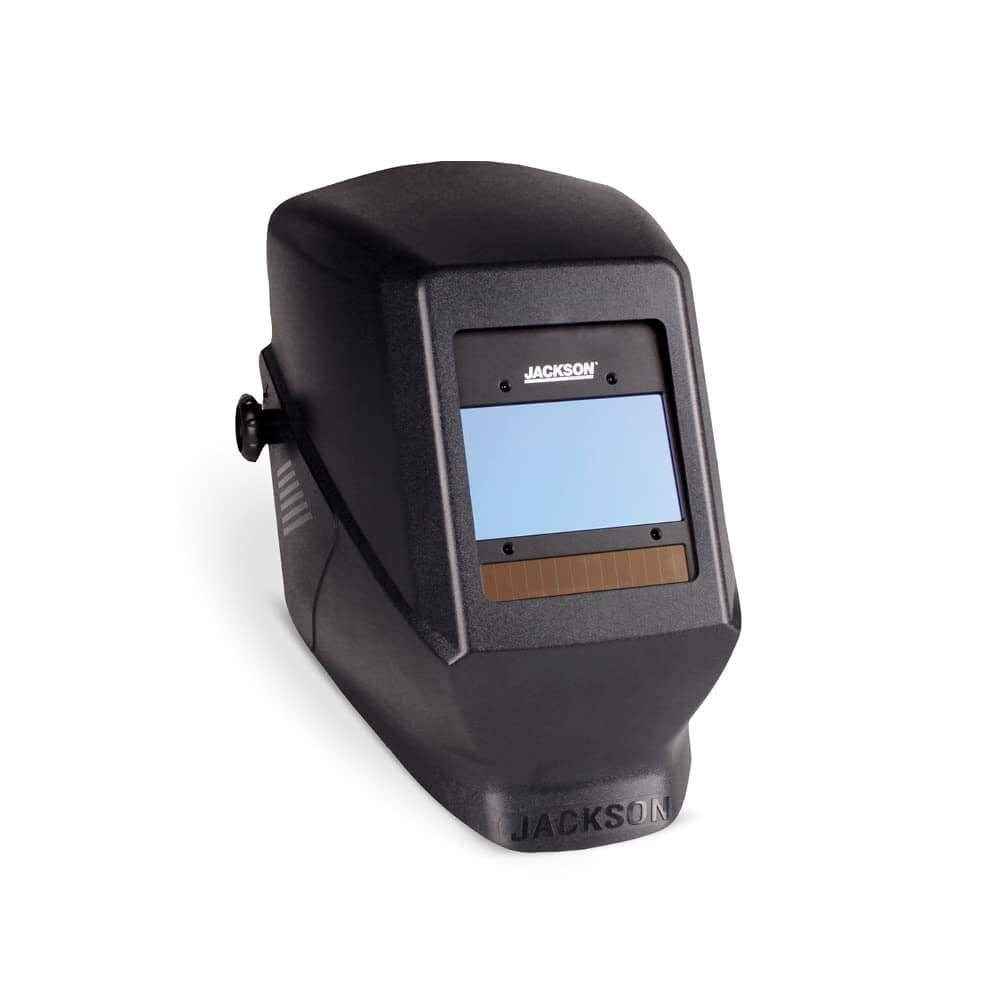
The purpose auto darkening serves are
- Protects face from sparks and flames of welding
- Protects eye from highly harsh lights
- Protects your eyesight from welding light
- Protects your lungs from absorbing metal fumes
Auto darkening helmet contains an auto lens that cover eyes. The lens allows only a certain amount of light at a time. Which prevents the harmful light from entering your eye.
It actually converts the white eye damaging light into green and blue light, allowing you to see the weld area and your mig gun touching the base metal without any damage to eyes.
b) Welding hood and pancake hood.
Welding hood and pancake welding hood are normal helmets that protect your face from sparks and flames. They lack the features of an auto darkening helmet. They can’t turn the white light into green and blue lights that soothes eyes from welding light.
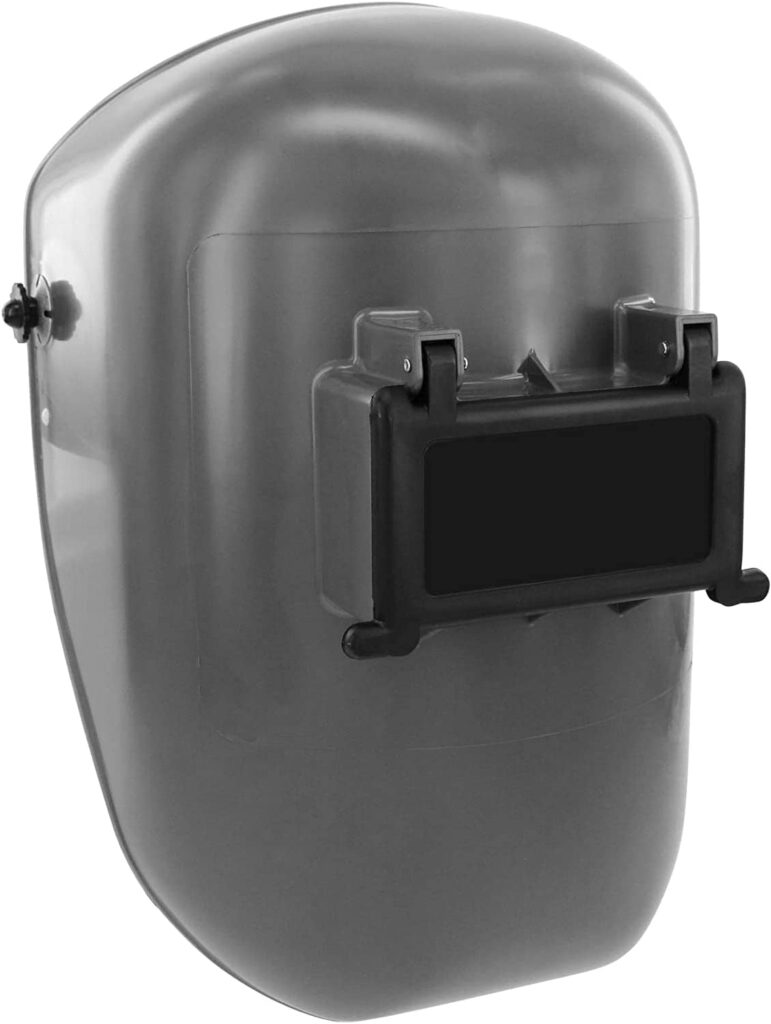
However, you can use green or blue lenses in your pancake hood that will work close to the auto darkening helmet.
2. Mig welding Pliers
MIG welding pliers are usually made of high-quality steel and feature insulated handles that can withstand high temperatures. These pliers are designed to grip and manipulate hot metal with ease, and they are also capable of cutting and splicing wires.
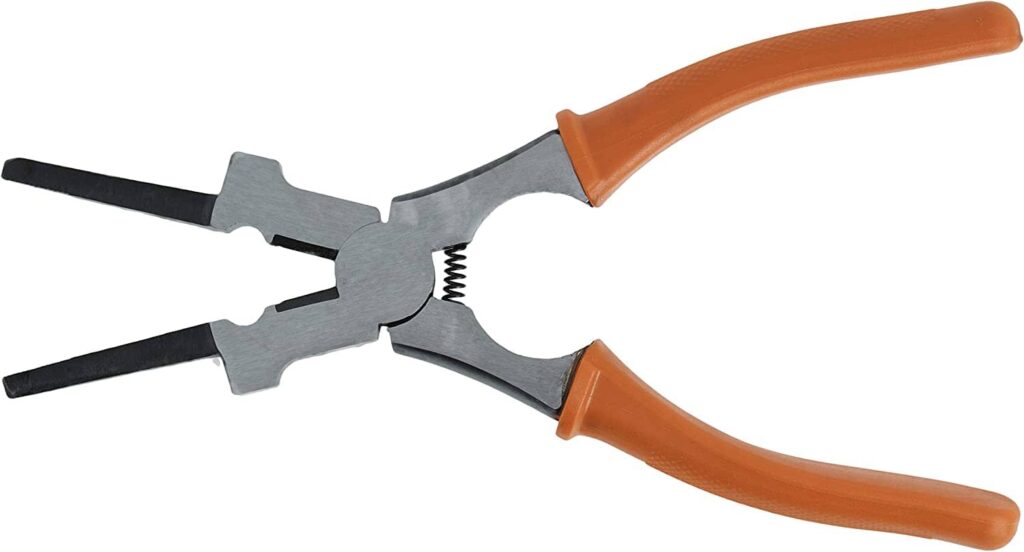
Pliers are used to
- Remove the nozzle from gun
- Loosen & tighten the contact tips
- Cut wire
- Clean spatter
There are different types of pliers for MIG welding
- Needle-Nose Pliers: These pliers are ideal for working in tight spaces and manipulating small parts. They have long, thin jaws that can reach into tight areas.
- Cutting Pliers: Cutting pliers, also known as diagonal pliers, are designed to cut wires and metal.
- Spatter Pliers: Spatter pliers are used to remove spatter from the weld area. They feature a curved head that can scrape off the spatter without damaging the weld.
- Multi-Purpose Pliers: Multi-purpose pliers are versatile and can perform various functions such as cutting, gripping, and splicing.
Mig welders usually use multipurpose ones for versatile welding work.
3. Mig Welding Gloves
Gloves are an essential tool for mig welding. It protects your hand from being hurt and burned from heat. When it comes to mig welding, you need a pair of gloves that are thicker and made of robust fabrics like leather gloves, Aluminized Gloves or Pigskin Gloves for better insulation.
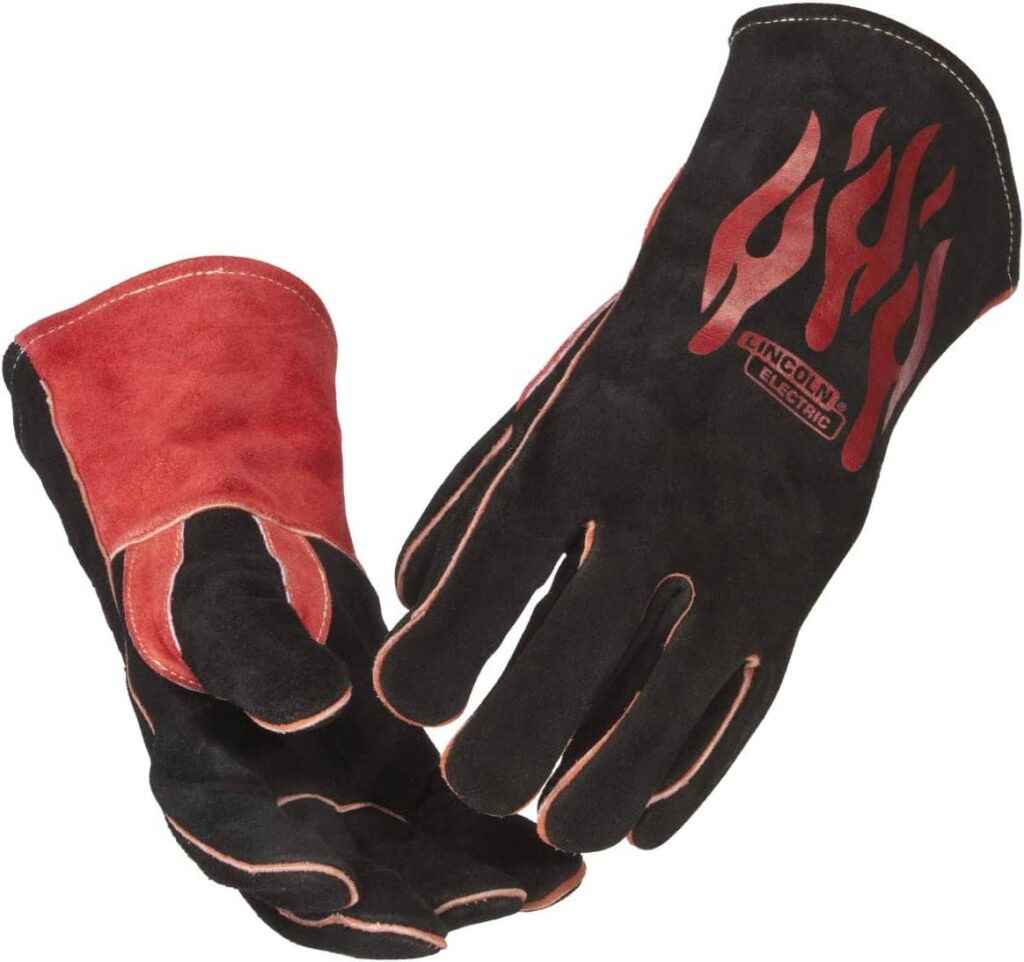
When you do mig welding, the weld area becomes too warm that it can burn your hand. That’s why mig welders need to wear a special type of gloves in welding.
For mig welders, gloves are thick and must have padding on the back. And the gloves should not be fit to hand. Because in some cases, continuous welding will heat up the gloves. The loose fighting will help you to throw the gloves easily in this case.
Always go for the right gloves before even starting the preparation to welding.
4. Metal Brush
Metal brushes are used to clean the weld area before and after the welding. We know welding creates weld slags around the weld area. You must clean them as soon as possible before they become strong. In this case you need a metal brush made to clean them.
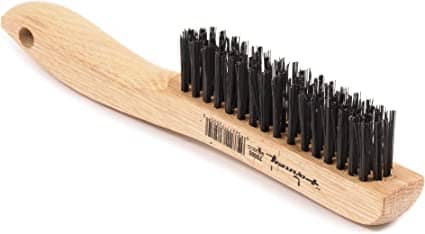
Also it is used to clean and sand the rusts and dirt’s off the metal before starting the welding.
5. Chipping Hammer
Chipping hammer is a special type of hammer used in welding. We always notice that, after finishing welding, there can be slags and metal droplets around the weld area after it solidifies. Chipping hammer helps to loosen the solidified droplets to ease the cleaning process.
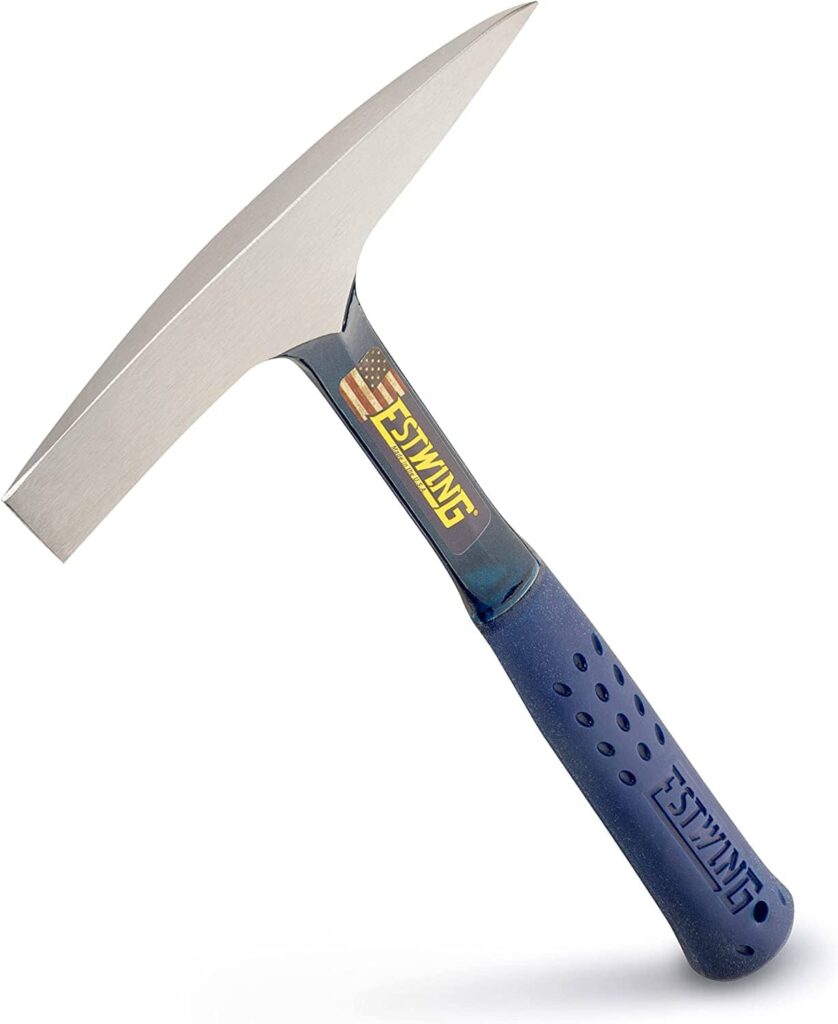
Also you can use the hammer to clean the rust and first that can’t be brushed away through metal brush.
6. Mig Welding Boots
A welder should wear a good pair of boots before starting welding. As per research, 25% of disability in workplaces are caused because of foot injury. Most underrated and undiscussed form of injury it is. So you must pay attention to the issue, especially when you are doing welding.
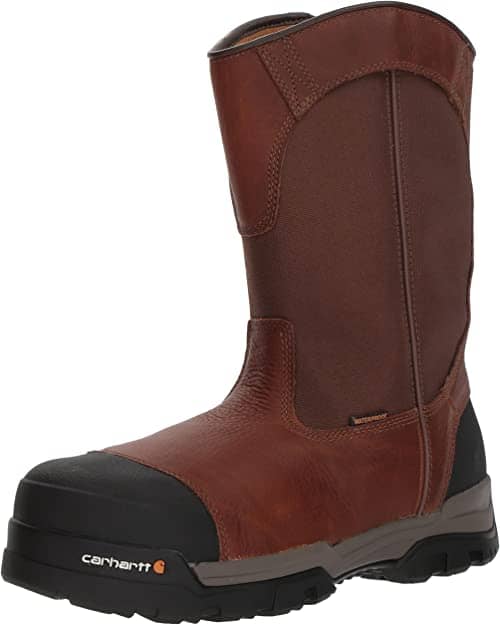
So to save your feet from being injured in welding, you should use welding boots. Welding boots are specifically designed to protect your feet from the various hazards of welding, including electrical shock, hot metal sparks, and chemical spills.
They are made from materials such as leather or fire-resistant materials like Kevlar to protect your feet from burns and other injuries.
Additionally, welding boots have steel-toe caps to protect your toes from falling objects or heavy equipment that could cause severe damage. The soles of the boots are also slip-resistant to prevent accidents caused by slips and falls.
7. Welding Carts
It is not an essential tool in welding. But it helps welders to carry the welder and gas tanks for welding with ease in a disciplined way. Carts contain wheels under it and you can carry and move welder machines, gas tanks and other welding tools to anywhere you need.
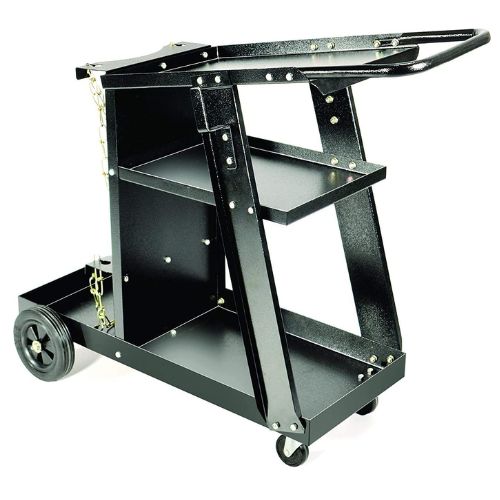
It’s a carrier for your welding equipment. Some welding carts also contain tool boxes where you can store pliers, ranches, drill machines, grinders, screwdrivers etc.
8. Welding Sleeves
The primary purpose of welding sleeves is to provide protection to the welder’s arms and torso from the heat and sparks generated during MIG welding. Welding sleeves are made from fire-resistant materials such as leather, Kevlar, or wool that can withstand high temperatures and prevent the welder from sustaining burns.

The sleeves are designed to cover the welder’s entire arm, from the shoulder to the wrist, and are fitted with cuffs that can be tightened to prevent sparks and debris from entering the sleeves. It also protects your clothes from welding sparks.
9. Nozzle Gel
Nozzle gel is another important tool that is overlooked most of the time. In mig welding we use a mig gun that has a tip at the edge of the gun. During the welding process, the electrode wire is fed through a torch and the tip of the torch is surrounded by a nozzle. The nozzle directs the flow of the shielding gas, which protects the weld pool from the atmosphere.
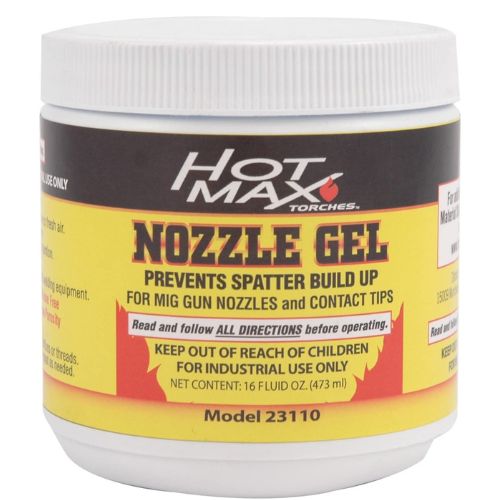
This can result in poor weld quality, including porosity and lack of fusion. Debris can also accumulate on the outside of the nozzle, which can affect the flow of the shielding gas and lead to spatter and poor weld quality.
That’s why nozzle gel is used to keep the welding clean and free of spatter and debris, which can block the gas flow.
10. Safety Glass
If you are using a helmet to Mig weld, then there is no need to wear the glasses. Otherwise you must at least cover your eyes to prevent it from welding spark & weld light. There are a bunch of glasses in the market that will work as a protector to your eyes while welding.
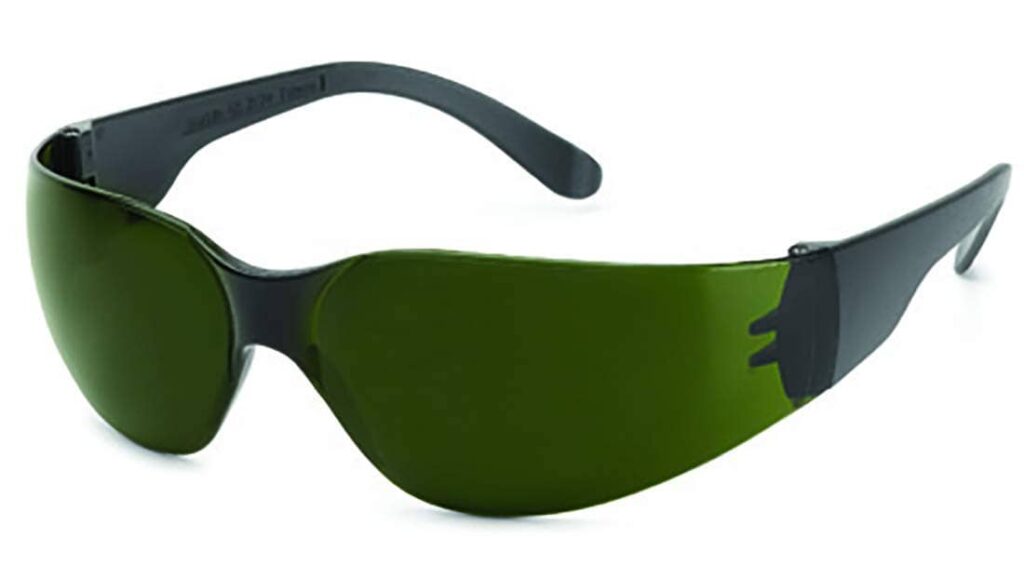
Any type of glass is suitable to wear in welding. But the plastic glasses, either white or colored, are recommended for welding or other fabrication work.
11. C-Clamps
C clamps work as a support in welding as it helps to hold and pressurize the metals upward or downward to keep the two metals close to each other while mig welding.
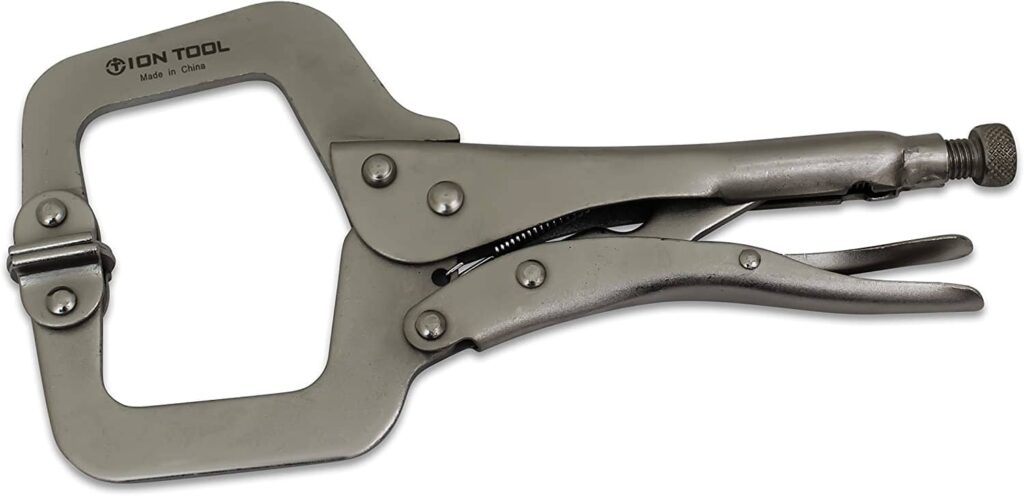
C clamps are named so because of their shape. They look like the English word “C”. C clamps are used not only in welding, but in any metal work, even woodworking projects.
12. Metal File
Files help to smoothen the edges of metal. When we fabricate and cut metal for welding or other purposes, we often encounter uneven edges on the metal. We need to make them smooth to ensure the metal is ready to weld.

This work can be done with the angle grinder in an automated way. But there can be some areas which can’t be grinded with an angle grinder. There you will need a file to smoothen the metal.
13. Soapstone
Name is soapstone but it is actually not made of soap or stone. Soapstone is like chalk or marker which is used to mark on the metal. We need to measure and cut the metal according to requirements before welding. Marking the metal after measurement is important here to avoid mistakes.
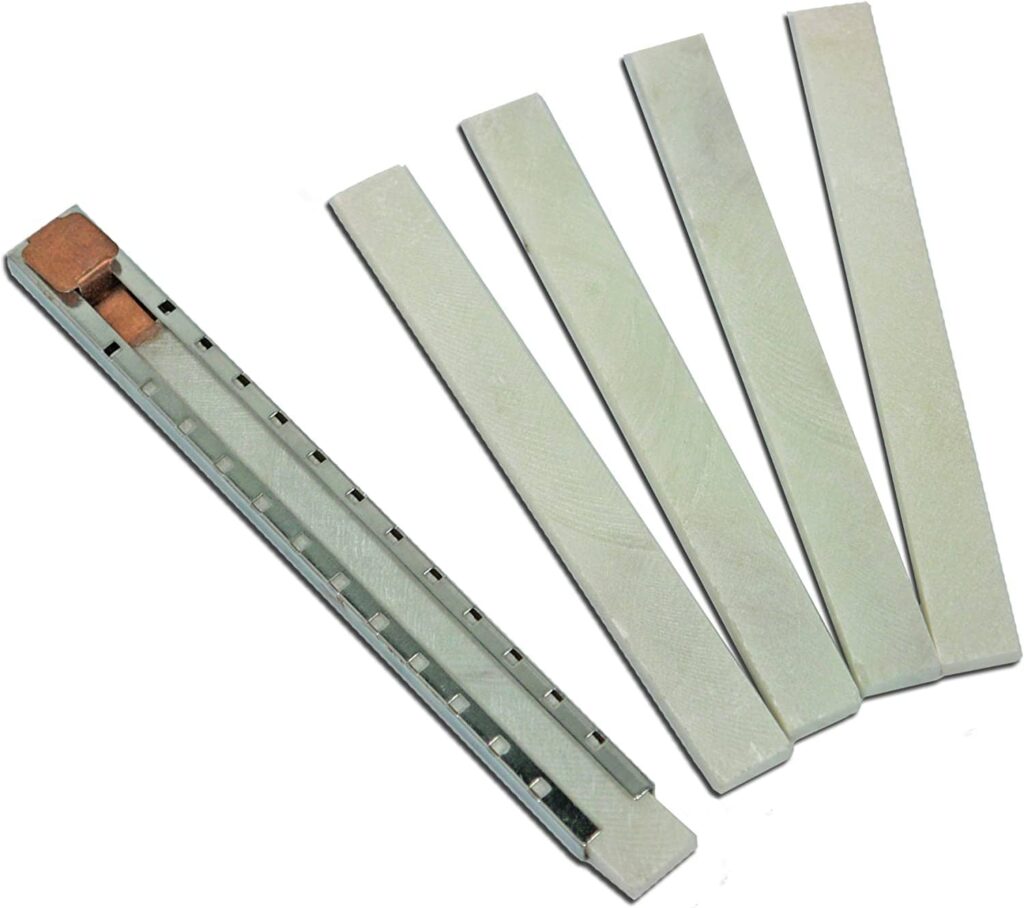
To mark the metal welders use soapstone. Soapstone can be easily removed and also it can withstand the heat applied while welding.
14. Sheet Metal Gauge
How shall you measure the metal thickness? We all know that different thickness of metal requires different wire size, shielding gas and Mig settings. So to MIg weld perfectly and precisely you must know the thickness of the metal you are welding. To do the work sheet metal gauge is used. It is a rounded scale with a bunch of teeth spaced at a different width.
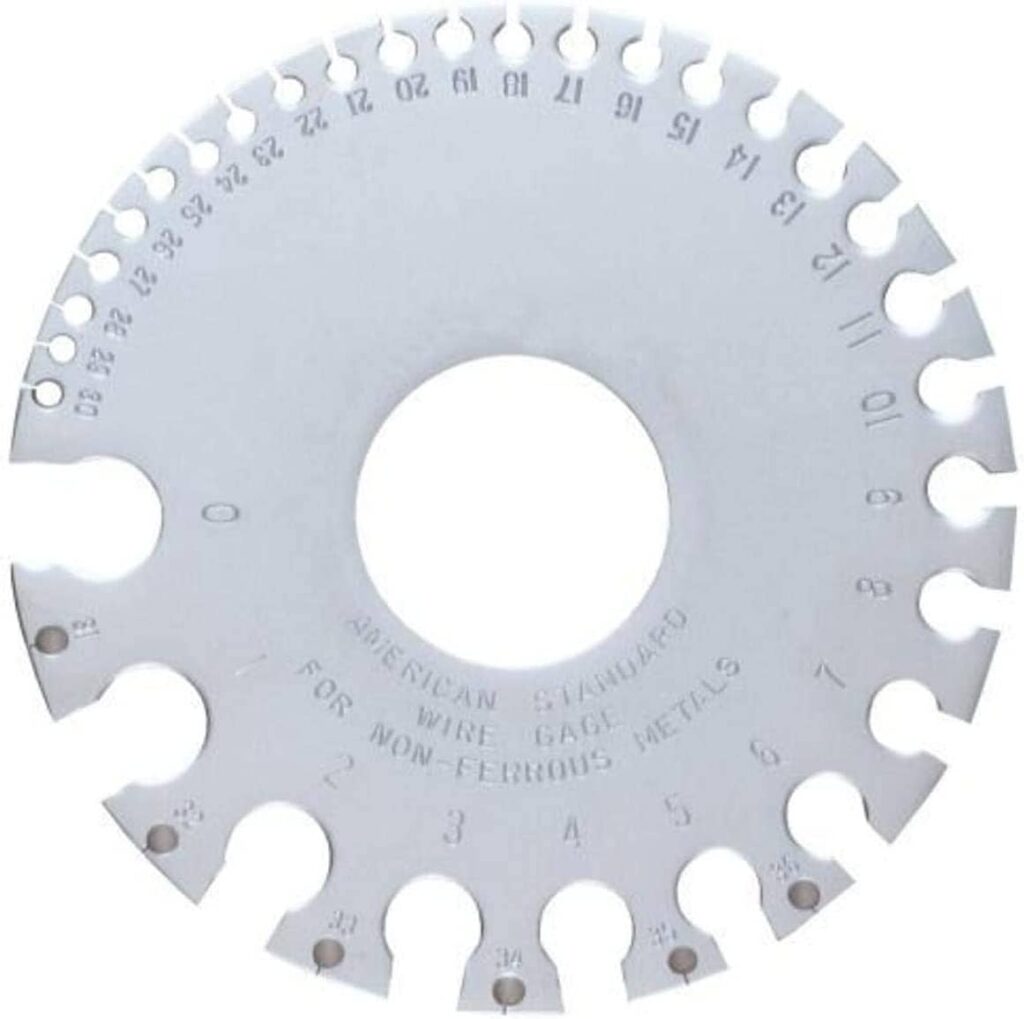
You just need to insert the steel sheet into the teeth to take the gauge. Where the sheet metal is fit, the measure printed on the scale is the thickness of that metal. It’s easy to measure sheet metal thickness with a metal gauge.
15. Welding Magnet
Welding magnets work as an alternative to clamps. These are magnets which hold the metal to each other thus supporting to weld precisely. Magnets work on all metal except stainless steel and some aluminum alloy.
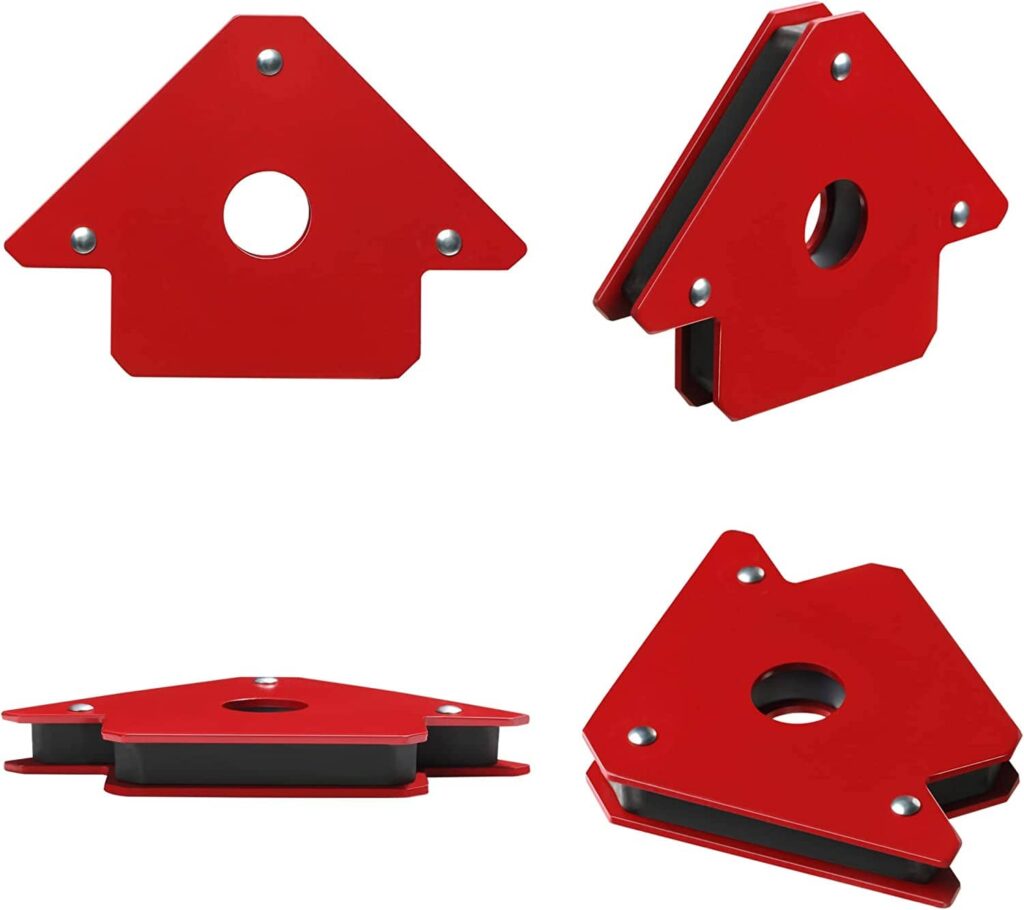
So if you are working with metal other than Stainless steel you may use magnets to bolster your work.
16. Mig Liners
Mig welding liner tubes are made of either steel or nylon and work as a mediator between wire feeder and torch tip.
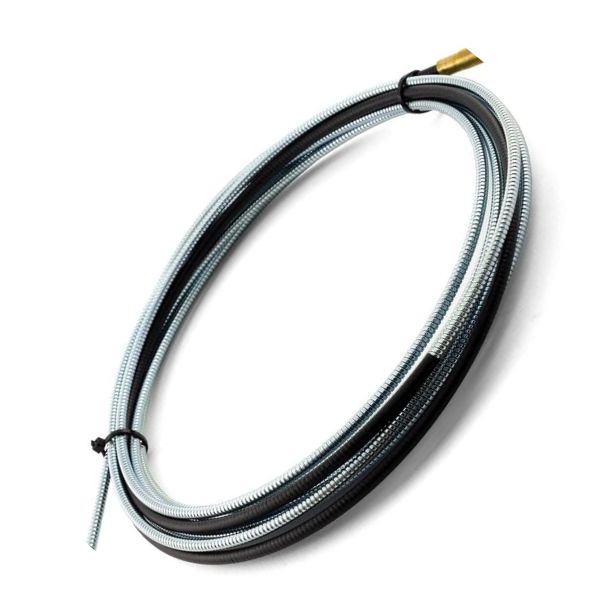
These are flexible tubes inserted into the welding torch to guide and protect the welding wire as it feeds from the welding machine to the weld pool. By ensuring smooth and consistent wire feeding, MIG welding liners contribute to the overall efficiency and quality of the welding process.
Primers
Primers are not internal part of mig welder. But it is an essential accessories for all welding work. Basically primers work as pre-paint metal surface preparator.
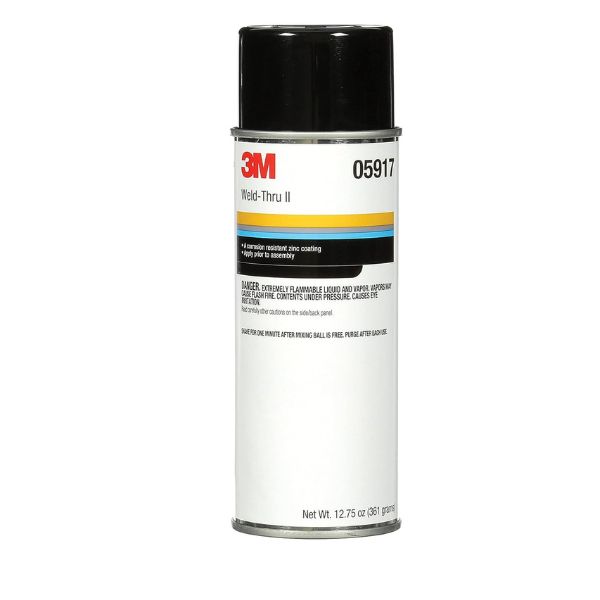
These specialized primers are applied to the surfaces prior to welding to remove contaminants, improve adhesion, and prevent oxidation during the welding operation. By creating a clean and stable welding environment, welding primers enhance the quality and integrity of the welds while minimizing the potential for defects.
Last Words
These are some of the tools that the welders use in mig welding. Whether beginner or professional, you will need these tools for any welding projects you take. So make sure you have the tools in your kit before starting mig welding work and thank me later.